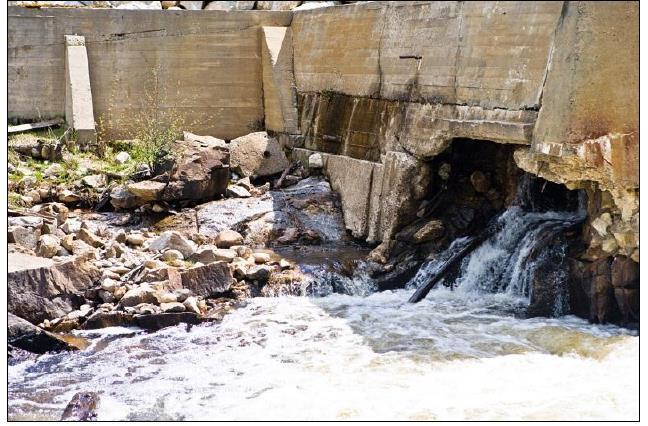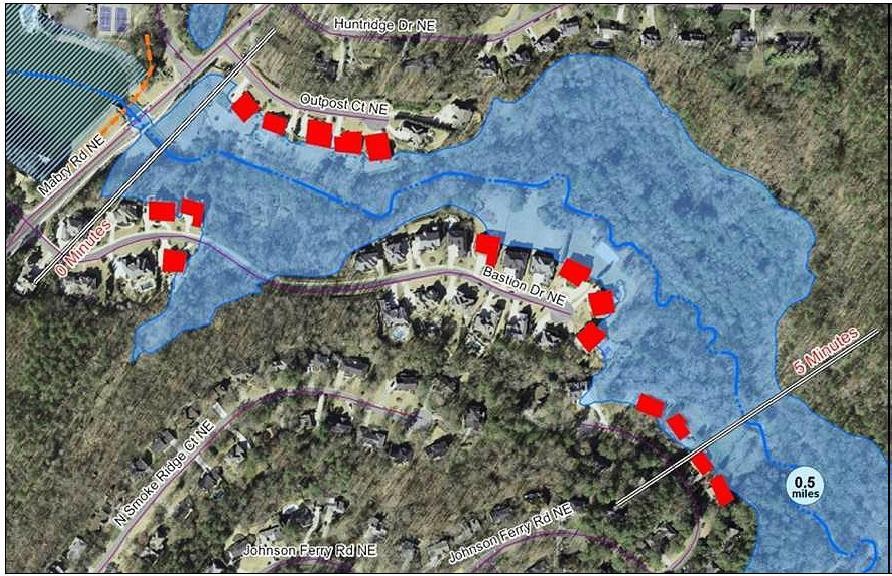Emergency Action Plans Now Required
January 6th, 2019
Emergency Action Plans Now Required for Owners of Significant Hazard Potential (Class II) Dams
The Massachusetts Department of Conservation (DCR)’s Office of Dam Safety (ODS) regulates over 1,400 dams in Massachusetts. When people live in areas that could be affected by the operation or failure of a dam, there is potential for an emergency related to a dam safety incident. A dam safety incident is an impending or actual sudden, uncontrolled release or excessive release of water from an impounding structure. The release of water may or may not endanger human life, downstream property, or the operation of the structure.

Figure 1: Dam concrete failure (FEMA)
Hazard classification categories are based upon the potential for damage to homes and infrastructure in the event of failure and not the likelihood of failure. The table below defines each category and notes the number of each class in Massachusetts. To adequately protect residents of areas that could be affected by a dam failure or incident, the Massachusetts Dam Safety Regulations were amended in 2017 to be consistent with a 2012 law (M.G.L. c.21, Section 65) that requires owners of Significant Hazard Potential Dams to prepare an Emergency Action Plan (EAP) by December 31, 2019. Before this, only dams classified as High Hazard Potential Dams were required to prepare an EAP.

Figure 2: Flooding caused by Teton dam failure
Dam Hazard Potential Classification
Dam Classification | Class | Definition | Number in MA (2017) |
| High Hazard Potential | I | Dams located where failure will likely cause loss of life and serious damage to home(s), industrial or commercial facilities, important public utilities, main highway(s) or railroad(s). | 290 |
| Significant Hazard Potential | II | Dams located where failure may cause loss of life and damage to home(s), industrial or commercial facilities, secondary highway(s) or railroad(s) or cause interruption of use or service of relatively important facilities. | 647 |
| Low Hazard Potential | III | Dams located where failure may cause minimal property damage to others. Loss of life is not expected. | 509 |
An Emergency Action Plan (EAP) is a formal document that identifies potential emergency conditions at a dam and specifies pre-planned actions to be followed to help prevent loss of life and minimize property damage. Dam owners work with state and local officials to prepare and update EAPs to help mitigate losses resulting from dam failures. The EAP specifies actions the dam owner should take to moderate or alleviate the problems at the dam. EAPs should be reviewed and updated annually. EAPs include:
- Identification of equipment, manpower, and material available for implementation of the plan;
- A notification procedure, including a flowchart, for informing local emergency agencies;
- A dam failure inundation map showing the stream which will be flooded as well as the impacted downstream environment. The map should display the timing and attenuation of the dam breach flood at strategic locations.
- For High Hazard Potential Dams, maps are required for all dams;
- For Significant Hazard Potential Dams, the map is required where more than several downstream interests are expected to be significantly impacted during dam failure. In cases where the downstream interests affected by dam failure are minimal, a simplified inundation map may be permitted if determined appropriate by the judgement of the dam owner’s engineer and the Commissioner.
- A procedure for warning downstream residents if failure is imminent and a listing of addresses and telephone numbers of downstream residents

If you would like to assistance preparing an EAP for your dam or if you would like more information, please contact us at 800.725.2550 or [email protected].



